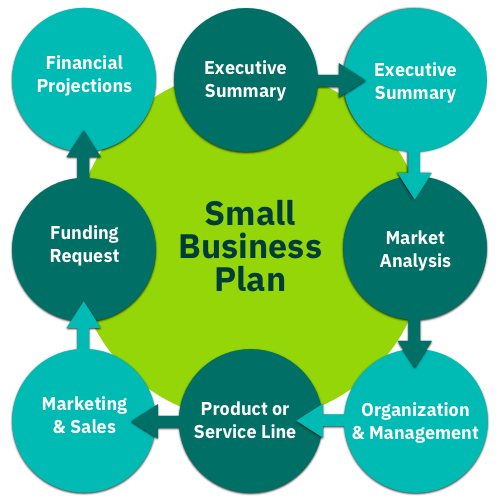Securing investment is a pivotal step for any startup, marking a significant advance towards achieving business success. Despite its importance, many founders need help with the complexities of raising funds. The path to obtaining investment is often fraught with challenges, from identifying the right investors to crafting a compelling pitch and managing negotiations.
The process demands not only a clear understanding of when to seek funding but also a strategic approach to effectively attract and engage potential investors. By timing the fundraising efforts appropriately and employing well-planned strategies, founders can enhance their chances of securing the necessary capital.
This guide delves into the intricacies of the fundraising process, offering insights on how to manoeuvre through potential obstacles and avoid common mistakes. It ultimately paves the way for a smoother and more successful investment journey.
Why Timing Matters in Fundraising

Timing plays a pivotal role in the fundraising journey for startups. One prevalent error among founders is the misjudgment of the duration needed to attract investment. Many entrepreneurs mistakenly believe they can secure funding quickly, which often results in disappointment and missed chances as the process takes longer than anticipated.
On the other hand, delaying the start of fundraising efforts can signal to investors a sense of desperation, which is equally problematic. This desperation can undermine the perceived value of the startup and weaken the founder’s negotiating position.
Therefore, striking the right balance between initiating fundraising efforts early enough to avoid last-minute pressures and not so early that it negatively impacts the pitch quality is essential for successful investment acquisition.
The Risks of Rushing Fundraising
Expecting a swift funding outcome can set unrealistic expectations and lead to unnecessary stress. Most successful fundraising campaigns span at least six months, with some taking up to a year. Rushing this process can result in a poorly executed pitch and missed investor interest.
The Dangers of Delaying Fundraising
Leaving your fundraising efforts too late can create a sense of urgency that investors may perceive as desperation. This can significantly diminish your negotiating power and the attractiveness of your startup. It is crucial to strike a balance between starting early enough to avoid last-minute pressures and not beginning so early that it affects the quality of your pitch.
Crafting a Successful Fundraising Campaign

A well-organized fundraising campaign is essential for attracting investors and securing capital. Here’s a step-by-step approach to ensuring your campaign’s success.
Step 1: Strategic Preparation Preparation is the foundation of a successful fundraising campaign. Begin by developing a robust business growth strategy and creating detailed financial projections for the next five years. These projections should be realistic and based on thorough market research and analysis.
Key Components of Preparation:
- Business Growth Strategy: Clearly outline your business objectives and growth plans. Detail your market positioning, competitive advantage, and long-term goals.
- Financial Projections: Include detailed revenue forecasts, expense estimates, and profit margins. Ensure data support these projections and reflect different scenarios (e.g., best-case, worst-case).
- Pitch Assets: Develop a compelling pitch deck, executive summary, and necessary documents that effectively communicate your startup’s value proposition. Ensure these materials are visually appealing and concise.
Step 2: Targeted Investor Outreach Once your pitch materials are prepared, the next step is to reach out to potential investors. Avoid a scattergun approach; instead, tailor your outreach to each potential investor’svestors who align with your startup Outreach Strategies:
- Investor Research: Identify investors who have a history of investing in similar industries. Look for investors with relevant experience and a track record of successful investments.
- Personalized Messaging: Customize your communications to reflect compellingly each company’s interests and previous investments and highlight how your startup aligns with their investment strategy.
- Building Relationships: Engage with investors through networking events, industry conferences, and online platforms. Establish a personal connection and demonstrate your commitment to their interests.
Step 3: Capturing Investor Interest With strong pitch assets and targeted outreach, you should now focus on capturing investor interest. This involves presenting your business strategy and financials in a compelling manner and addressing any concerns investors may have.
Techniques for Success:

- Engaging Pitches: Deliver clear and persuasive presentations that highlight your startup’s unique aspects. Use data and storytelling to illustrate your value proposition and market opportunity.
- Follow-Up Meetings: Schedule and conduct follow-up meetings to address additional questions and provide further information. Be responsive and available for further discussions.
- Due Diligence: Be prepared for rigorous scrutiny and provide all necessary documentation to facilitate the due diligence process. Ensure transparency and clarity in your financial and operational details.
Step 4: Closing the Deal The final fundraising stage involves closing the deal and securing the investment. This process typically involves legal negotiations and the transfer of funds.
Closing Tips:
- Legal Considerations: Ensure all legal agreements are thoroughly reviewed and completed. Work with legal professionals to draft and finalise investment agreements.
- Fund Transfer: Confirm the availability of funds with investors and anticipate potential delays in the transfer process. Plan for contingencies and keep communication lines open.
- Expectation Management: Plan for possible delays in receiving funds and communicate clearly with your investors about timelines. Set realistic expectations and keep all parties informed of any changes.
How Long Does It Take to Raise Startup Funds?

Fundraising can take a minimum of six months. Planning for this timeline helps set appropriate expectations and allows you to align your business development activities with the fundraising process.
Key Takeaways:
- Early Planning: Start preparing your fundraising materials and strategy well in advance.
- Targeted Outreach: Focus your investor outreach efforts on those most likely to be interested in your startup.
- Realistic Timelines: Understand that the fundraising process may take longer than anticipated and plan accordingly.
Conclusion
Securing investment for a startup is a multifaceted process that hinges on a well-coordinated blend of strategic planning, targeted outreach, and precise execution.
Effective fundraising begins with a clear and strategic plan that outlines the business goals, funding needs, and potential sources of capital. This plan should be complemented by targeted outreach efforts, where founders identify and engage with potential investors interested in their business.
Timing is critical; initiating the fundraising campaign early and aligning it with market conditions and investor schedules can significantly impact success. Additionally, maintaining open and transparent communication with potential investors helps build trust and fosters a positive relationship. By following a structured approach and focusing on these critical elements, startups can significantly improve their chances of securing the necessary investment to drive growth and achieve their objectives.








